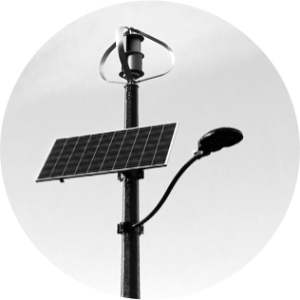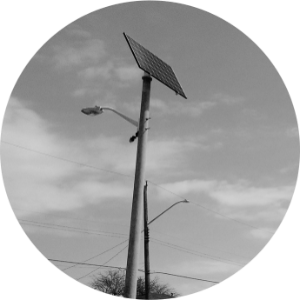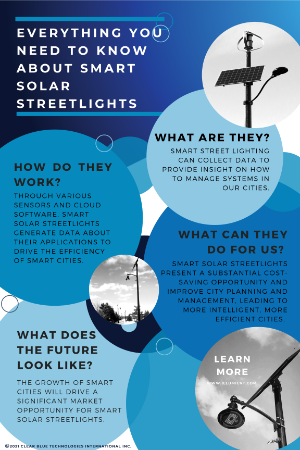Everything You Need to Know About Smart Solar Streetlights

Our cities are undergoing a revolution and becoming ‘Smart’. The Smart City revolution is transforming how cities operate, most importantly by making them more efficient. By collecting and leveraging data from the Internet of Things (IoT) or internet-connected devices, we can make informed decisions about how our cities should operate and allocate our energy resources most efficiently. Intelligent IoT systems are the foundation of the smart city revolution, and smart street lights are a key component. Smart, solar street lights allow you to control and manage numerous street light systems through remote communication while saving on energy. These key features will pay huge dividends for smart cities and other projects from now and well into the future.

What are smart solar streetlights?
It is essential first to discuss what smart streetlights are to understand their role in Smart City development. Of course, everyone is familiar with how traditional streetlights operate, turning on at set times to light the way at night and turning off at set times. But smart solar streetlights can offer us much more.Cities can use smart street lights to collect data for insight into managing energy and lighting in our cities. Furthermore, intelligent street lighting can adapt in real-time to ensure the safety of pedestrians and traffic. As a result, smart solar street lighting plays an essential role in developing smart cities, serving as the building blocks for intelligent lighting and Internet of Things applications.

How do smart solar streetlights work?
Now let’s now consider how the technology behind smart solar streetlights works. Smart streetlights typically are equipped with various lights and sensors. Sensors can detect movement, enabling dynamic lighting and dimming and helping to generate essential data about the application.
In addition, smart streetlights can communicate with each other over the internet. This way, if one streetlight detects movement, it can inform the other lights on the path or roadway to brighten. Vital to a smart solar streetlight is its connection to cloud software. This software helps gather data generated by the devices to monitor and manage system performance. Real-time monitoring and management enhance the efficiency of operations, which is the core principle behind Smart Cities.
The sensors and remote cloud communication which underpin smart solar streetlights significantly increase the capacity to monitor and manage critical systems. This technology is beneficial for a wide range of applications, including:
• Security/CCTV cameras, other security devices in high crime areas
• Weather and moisture detection sensors
• Pollution/air quality monitoring
• Traffic sensors and pedestrian counters
• Smart parking systems
• WiFi hotspots
• Feed for real-time consumer apps (parking, traffic, safety, more)
Through the real-time monitoring facilitated by smart streetlights, we can monitor and manage critical systems to improve the efficiency of operations. Data is crucial for Smart Cities, and smart streetlights provide the essential foundations for Smart Cities. 
What can smart solar streetlights do for us?
Now that we understand what smart streetlights are and how they operate, what real value can they provide for cities? Smart solar streetlights can provide huge savings on money and energy while drastically improving how we plan and manage our cities.Let’s think back to the traditional lighting system we discussed. An outdated system of traditional streetlights can make up 50% of a city’s total energy costs, as traditional grid-connected lights are inefficient. Unfortunately, however, many cities are reluctant to overhaul their systems for more efficient ones.
Simply shifting from outdated HID (High Intensity Discharge) technology to LED lights (the chosen light source for smart solar streetlights) can instantly yield up to 80% in savings. Although completely revamping a lighting system requires significant capital, smart solar street lighting creates enormous savings on operating costs and helps cities reduce their carbon output. In addition, with smart solar streetlights and remote monitoring, you will always be immediately alerted when there is a maintenance issue with the light.
Maintenance can also be done remotely, eliminating the need for costly maintenance site visits and avoiding unplanned outages. Therefore, smart solar streetlights can save money for Smart Cities by slashing energy bills and drastically reducing maintenance costs.
When additional sensors are added to a smart streetlight, the ability to collect data in real-time enhances city management. For example, if traffic monitoring sensors were activated in a city, collecting data from these devices in real-time provides insight into how to plan, manage and optimize traffic flow in cities.
Or, as was done in a major city in the western United States, city planners added smart streetlights to improve parking downtown. Smart streetlights were installed and deployed with sensors to help direct drivers to vacant parking spots and direct traffic officers to illegally parked cars. Ultimately, this unique process was enabled by smart solar streetlights. Leveraging data can help improve the efficiency and sustainability of cities and the lives and well-being of their citizens.
What is the market for smart solar streetlights?
Soon, Smart Cities will become the choice for all major urban centers, and this change places increasing reliance on IoT and intelligent systems, driving the market for smart solar streetlights. According to the APAC Smart Cities Report in 2019, 68% of the world’s population is going to be living in cities by 2050. As cities become more jam-packed, the demand for Smarter Cities built on smart streetlights will explode. One thousand cities have already launched Smart City initiatives worldwide. According to Globe News Wire, the solar street lighting market is currently valued at $14 billion US, and is expected to exhibit a CAGR of 14.7% between 2020 and 2027.Making data-driven decisions to make cities more efficient begins with smart solar streetlights. When solar streetlights are made smart, you can receive data in real-time to monitor and manage the systems. Leveraging this data is the technology that underpins Smart Cities. As a result, smart solar streetlights will play a vital role in the growth and development of Smart Cities.



